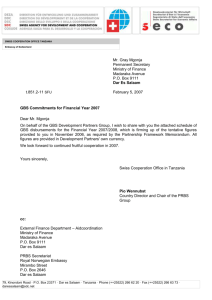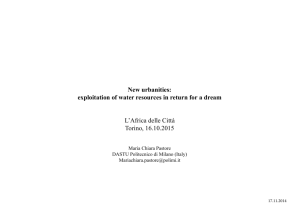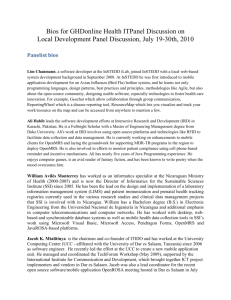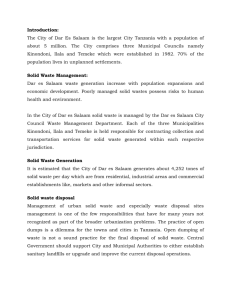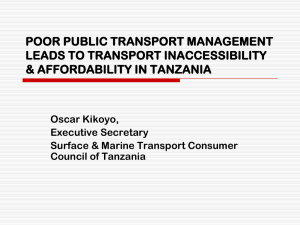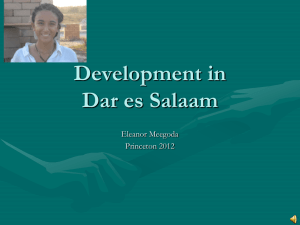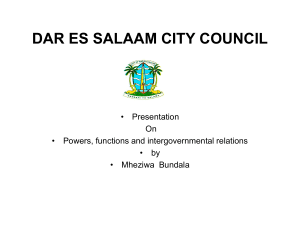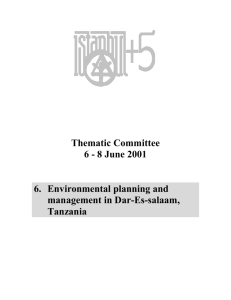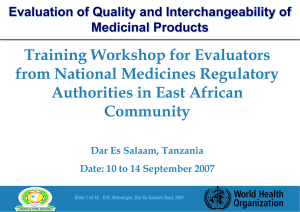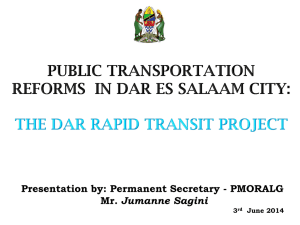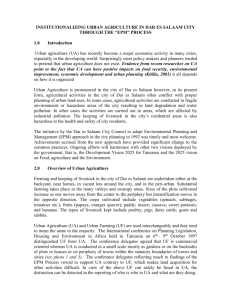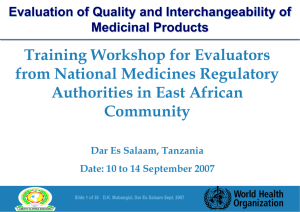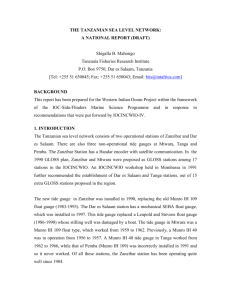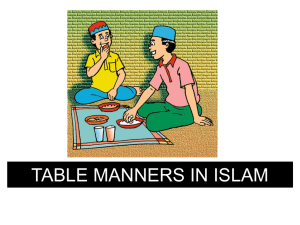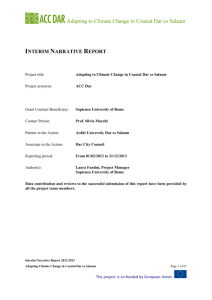Adaptation Potentials of Green Structures to Urban Heat
advertisement
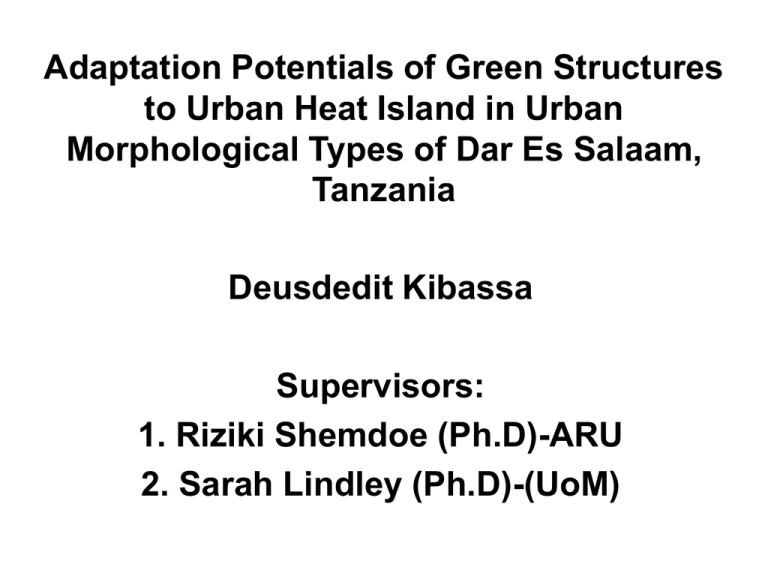
Adaptation Potentials of Green Structures to Urban Heat Island in Urban Morphological Types of Dar Es Salaam, Tanzania Deusdedit Kibassa Supervisors: 1. Riziki Shemdoe (Ph.D)-ARU 2. Sarah Lindley (Ph.D)-(UoM) Research issue • In most developing countries, green plants, spaces and structures are disappearing quickly at the expense of physical and population densification and poor planning (Mung’ong’o 2005). As climate change increases and temperatures rise the cooling effect of urban green spaces will become increasingly important (NCRA, 2007). Research issue cont..... • There is limited knowledge on the role urban green structures can play in mitigating climate variability induced hazards specifically the changing temperatures. This study aims in assessing dynamism of green spaces is Dar es Salaam and their adaptation potentials to urban heat island (UHI) in different urban morphological types (UMT) in the Dar es Salaam. Objectives Main Objectives • The main objective of the study is to establish how green structures in Dar es Salaam shrink and their adaptation potentials to urban heat island (UHI) in different urban morphological types. Specific Objectives • To identify and map all the urban morphological types (UMT) of Dar es Salaam. • To establish the dynamism of green spaces within urban morphological types in Dar es Salaam • To establish temperature variations between and within urban morphological types (UMT). • To establish the regulating impact of green spaces on urban heat island (UHI). Study area • Location of Dar es Salaam - Latitudes 6036’ and 70.0’ South and Longitudes 3900’ and 33033’ East • Climate of Dar es Salaam - Equatorial climate, hot and humid throughout the year - Average temperature of 29ºC. - Average rainfall is 1000mm (800mm 1300mm). - Humidity is around 96% in the mornings and 67% in the afternoons. Study Area: (a) Geographical location of Tanzania in Africa, (b) Dar es Salaam in Tanzania, and (c) Municipalities and topographical distribution of Dar es Salaam (Kebede and Nicholls, 2011). Methodology Specific Objective/Research question Type of data collected/variable Data collection technique Data Expected results and analysis presentation procedur es/tool What are the existing urban morphological types (UMT) of Dar es Salaam? -Land use and land cover types Land use maps -Arch GIS -Map showing UMTs of Dar es Salaam produced What are the historical -Dynamism / size of green -Aerial analysis (type and size structures and their orthophotos, from 2002 to 2008) of shrinkage over time green structures in Dar es Salaam? -Arch GIS -Dynamism of urban green structures (through land cover analysis) from 2002 to 2008 established -Database or list and map of green structures using GIS produced -Assessment of urban green structures using GIS conducted How does temperature vary in between UMTs and what are the regulating impacts of green spaces to urban heat island? -One Wire -Report on the evaluation of the Viewer potential of urban green spaces within different (UMT) as a measure for adapting to the impacts of urban heat island (UHI) produced. -Temperature variations -iButtons Progress to date • The UMT and their map (shp files) are ready (Objective 1) • Land cover classes ready (Objective 2) • Land cover analysis in progress (Objective 2) • Sample shield prepared and testing together with the iButtons in progress (Objective 3) • Criteria for sitting iButtons established (Objective 3) Experimental set up for testing of temperature sensor shield Other photos of Dar es Salaam Dar es Salaam floods, December 2012
